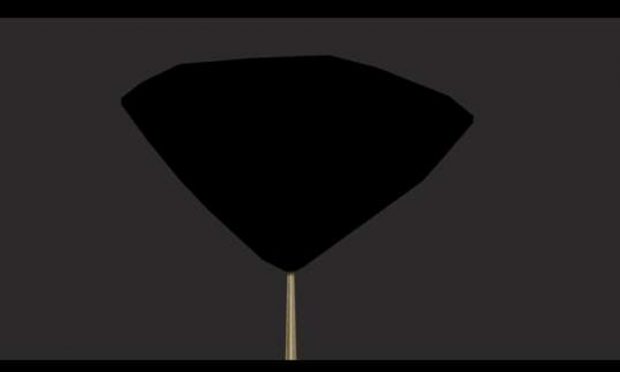
‘Blackest black’ material to date developed: MIT
Team Udayavani, Sep 16, 2019, 1:30 PM IST

Boston: Scientists at MIT claim to have developed a material that is 10 times blacker than anything that has previously been reported.
The material is made from vertically aligned carbon nanotubes or CNTs microscopic filaments of carbon that the team grew on the surface of a chlorine-etched aluminium foil.
The foil captures more than 99.96 per cent of any incoming light, making it the blackest material on record, according to the findings published in the journal ACS-Applied Materials and Interfaces.
Brian Wardle, a professor at Massachusetts Institute of Technology (MIT) in the US, said the CNT material may be of practical use, for instance in optical blinders that reduce unwanted glare, to help space telescopes spot orbiting exoplanets.
“There are optical and space science applications for very black materials, and of course, artists have been interested in black, going back well before the Renaissance,” Wardle said.
“Our material is 10 times blacker than anything that’s ever been reported, but I think the blackest black is a constantly moving target,” he said.
Wardle and former MIT postdoc Kehang Cui, now a professor at Shanghai Jiao Tong University in China, didn’t intend to engineer an ultra-black material.
Instead, they were experimenting with ways to grow carbon nanotubes on electrically conducting materials such as aluminium, to boost their electrical and thermal properties.
“I remember noticing how black it was before growing carbon nanotubes on it, and then after growth, it looked even darker,” Cui said.
He measured the amount of light reflected by the material, not just from directly overhead, but also from every other possible angle.
The results showed that the material absorbed greater than 99.995 per cent of incoming light, from every angle.
In essence, if the material contained bumps or ridges, or features of any kind, no matter what angle it was viewed from, these features would be invisible, obscured in a void of black, researchers said.
They are not entirely sure of the mechanism contributing to the material’s opacity, but they suspect that it may have something to do with the combination of etched aluminium, which is somewhat blackened, with the carbon nanotubes.
Scientists believe that forests of carbon nanotubes can trap and convert most incoming light to heat, reflecting very little of it back out as light, thereby giving CNTs a particularly black shade.
“CNT forests of different varieties are known to be extremely black, but there is a lack of mechanistic understanding as to why this material is the blackest. That needs further study,” Wardle said.
Udayavani is now on Telegram. Click here to join our channel and stay updated with the latest news.
Top News

Related Articles More

Scientists say India’s ‘Deep Sea Mission’ on track; hydrothermal vent discovery just the beginning

ISRO to launch SpaDeX Mission on Dec 30

ISRO to study how crops grow in space on PSLV-C60 mission

ISRO & ESA agree to cooperate on astronaut training, mission implementation

Snatcher lands in police net in Delhi, AI tech helps reveal identity
MUST WATCH
Latest Additions

Manmohan Singh: Architect of India’s economic reforms

‘In 2012, Manmohan underwent operations, never quite recovered physically’

Former PM Dr. Manmohan Singh passes away at 92

Contractor dies by suicide, alleges Minister Priyank Kharge’s aide responsible

Cricket match to crime: Five minors held for armed robbery in Delhi
Thanks for visiting Udayavani
You seem to have an Ad Blocker on.
To continue reading, please turn it off or whitelist Udayavani.



















